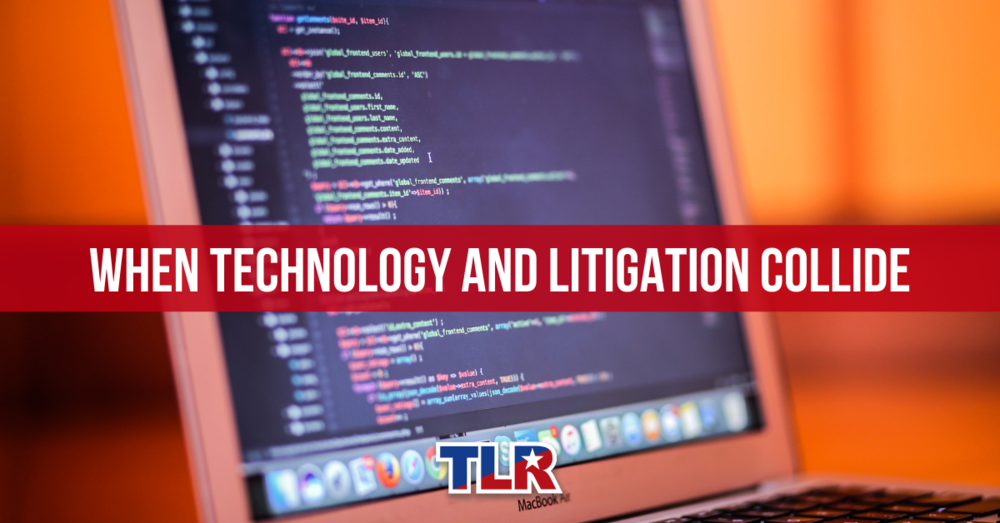
By Lucy Nashed, TLR Communications Consultant
Our world looks vastly different today than it did 15, 10… even just five years ago.
Need a ride? There’s an app for that. Groceries? There’s an app for that, too. Need a recommendation for a handyman, doctor or hairdresser? The apps have got you covered.
That’s why it was interesting to come across several articles recently that highlighted the collision (both literally and figuratively) between groundbreaking innovations in technology and one of the oldest industries on the planet—litigation.
You can’t throw a rock in Austin (or most major cities, for that matter) without hitting an electric scooter. The latest innovation in ridesharing, e-scooters can be rented using a mobile app, creating alternative transportation options to supplement vehicles and public transportation. But they’re also forging a new frontier in liability, as a recent article from City Lab points out.
This is the most literal sense of the collision between litigation and technology: who’s to blame when an electric scooter crashes? Is it the rider, who agreed to the terms and conditions of using the device? Is it the scooter company, which operates and maintains its fleet? Or is it the individuals employed by the company, often freelancers who perform maintenance and charge the scooters?
More broadly, the article brings up an interesting point for any cutting edge technology.
“Lawsuits against the scooter companies don’t have to prevail in the courtroom to damage scooter companies’ reputations, and in turn their bottom line… For an industry to be credible—to seem safe, or responsible, or, crucially, cool—companies have an interest in avoiding lawsuits that question that image…”
This is a new frontier for litigation, and some lawyers are eager to get in early on the trend. Just like lawyer ads appealing to people who’ve been injured in car accidents, we’ve already started seeing signs in Austin advertising legal services for those injured in scooter accidents. It will be interesting to see how the courts respond to these lawsuits.
The more figurative collision of litigation and technology involves the use of algorithm-based technology to facilitate litigation. We’ve seen this recently in conversations about third-party litigation financing, where lenders make loans to plaintiffs with the agreement that the loan will be repaid if the plaintiff prevails in the lawsuit. Recent articles have found that lenders use sophisticated algorithms to gauge the likelihood of a case prevailing in court, helping them judge whether the investment is risky or sound.
Technology is inseparable from modern life. It’s logical that the advances that make our daily lives more convenient would also be applied to industries like litigation. The question, though, is whether technology encourages additional litigation, as it could in the case of lawsuit lending, or discourages additional innovation, as it could in the case of e-scooters and other groundbreaking technologies.
On the litigation front, tech companies have been quick to innovate but slow to participate in civil justice reform efforts. The sting of harassing and costly litigation might push them to recognize the importance of having a fair legal system in Texas and elsewhere.
The answers remain to be seen. But in the meantime, if you need to file a lawsuit, there’s an app for that too.
